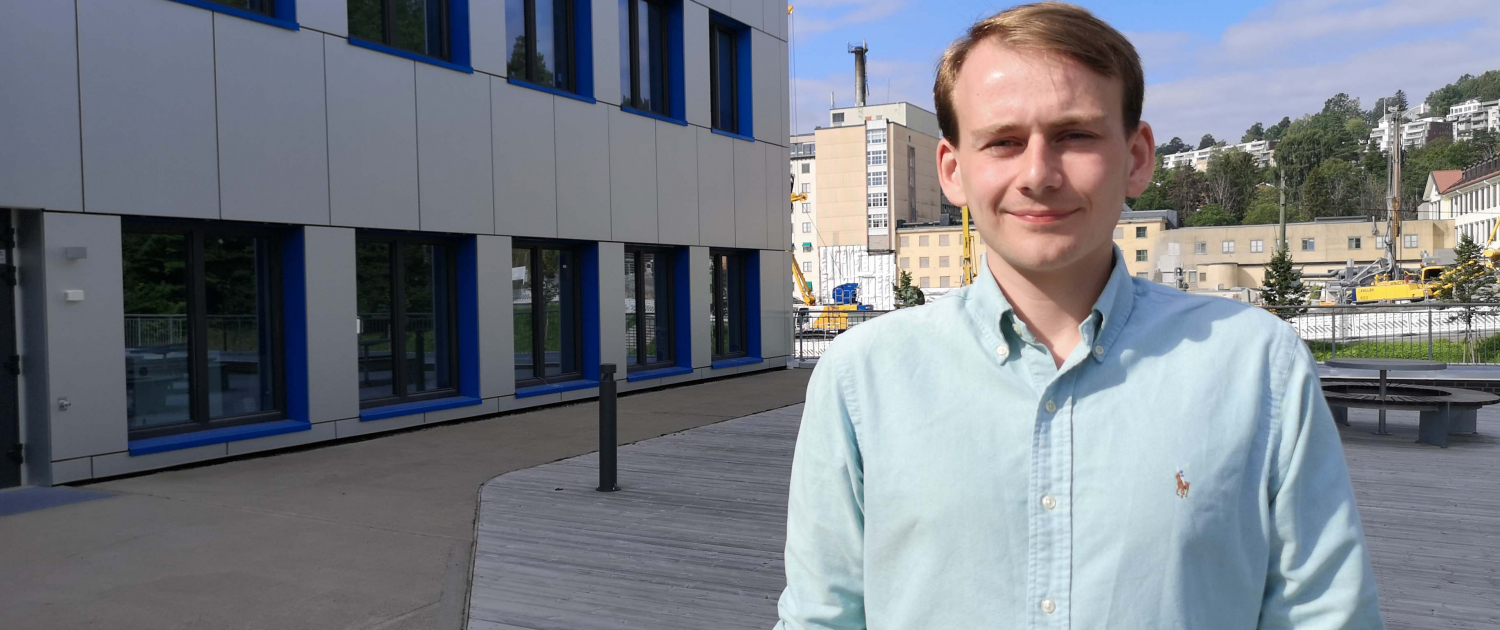Studying medtech with cancer patients at heart

Former Ullern student Eivind Lysheim has been inspired to make a difference for cancer patients
Eivind Lysheim had decided to study economics at university, until a work placement at the Norwegian Radium Hospital caught his interest in 2016, during his last year at Ullern Upper Secondary School.
The placement was arranged by Oslo Cancer Cluster and took place in the Department of Medical Physics. For an entire week Eivind was mentored by Professor Taran Paulsen Hellebust and her co-workers on medical imaging and how radiotherapy is used to treat cancer patients. The Ullern student learnt how to use the machines and how to create a theoretical treatment plan for a former patient.
“I have always been interested in the natural sciences. I felt that the combination of technology and medicine was extremely interesting. It is fascinating how you can use something that is perceived as deadly – such as gamma radiation, x-rays or high energy particles – and cure someone. When I saw the high-tech machines at the hospital, I got a little bit carried away,” Eivind said with a smile.
Eivind immediately changed his application from economics to the mathematics and physics programme with specialisation in biophysics and medical technology at NTNU in Trondheim.
Four years later, Eivind has one year left of his master’s degree and is still intent on working on technology that can improve the lives of cancer patients.
“Cancer can happen to anyone and almost everyone in Norway knows someone who has been affected by it. It is important that we develop the very best treatments for the people who get ill,” Eivind said.
Eivind got in touch with Bente Prestegård, project manager at Oslo Cancer Cluster, who helped him find a summer internship with our member Kongsberg Beam Technology. The company recently acquired funding to develop control systems for proton therapy machines.
“Among medtech students in Norway, proton therapy is probably the most popular area to work in. Everyone dreams about getting a job in this field. This internship has really been like hitting the jackpot for me,” Eivind said.
Kongsberg Beam Technology is developing a system called MAMA-K, which is short for Multi‑Array Multi-Axis Cancer Combat Machine. The machine treats the tumour with a number of simultaneous proton beams and is especially adapted for more mobile tumours, and it can be added to both existing and new proton machines.
Eivind has spent the summer doing research in the offices belonging to Semcon, who is one of Kongsberg Beam Technology’s partners.
Norway is in the process of building its first two proton centres, at Oslo University Hospital and at Haukeland University Hospital. Many medtech students are eager to work at these centres to develop cancer treatments. Moreover, the technology used in proton machines is an intriguing area of research constantly in development, which makes it highly attractive for new students.
“If I can work with proton therapy, I can look forward to a very exciting and varied career, because the field is always changing and you have to continually learn new things,” Eivind said.







